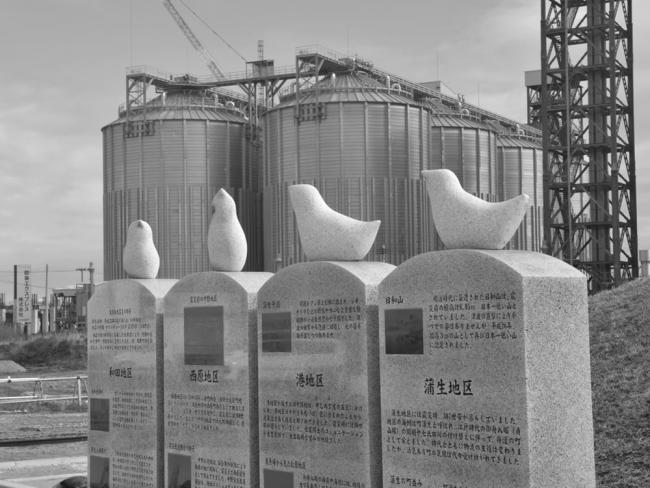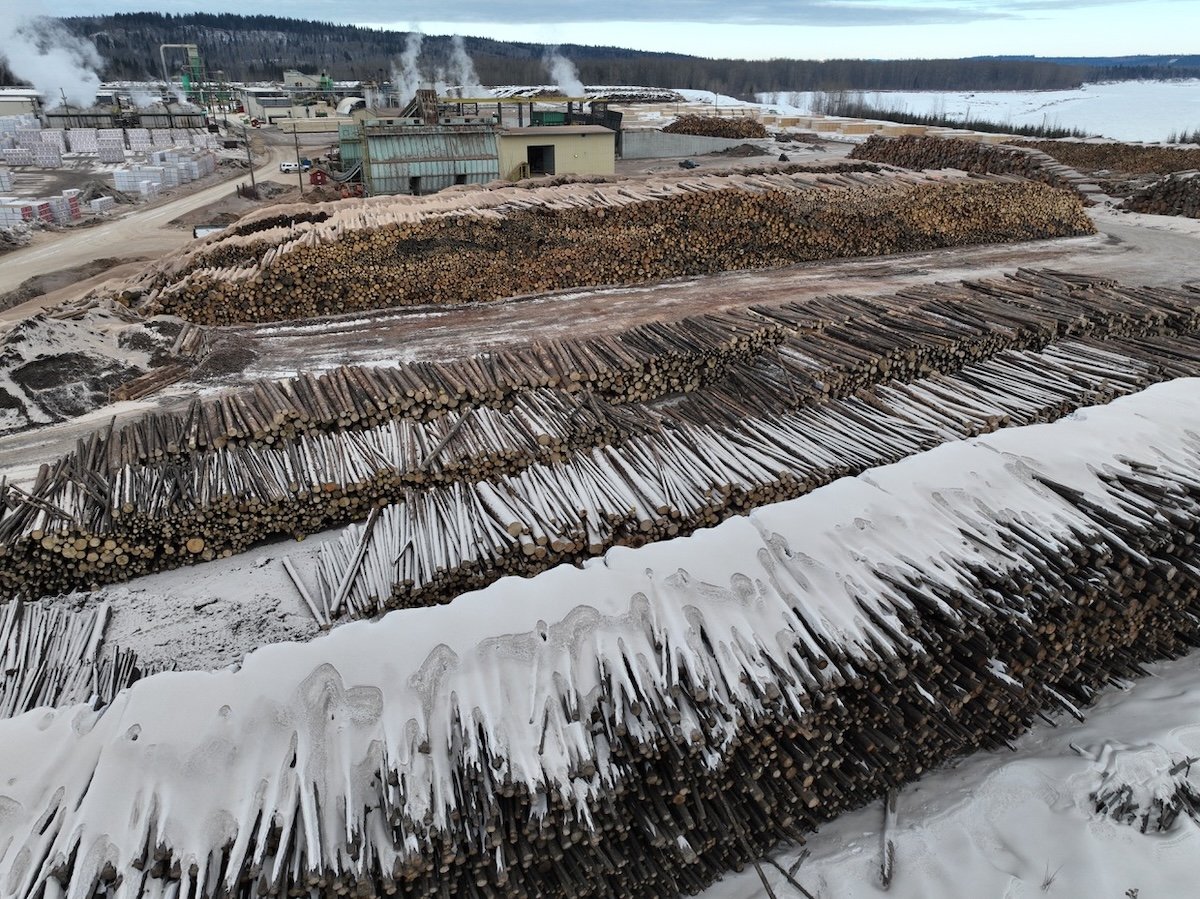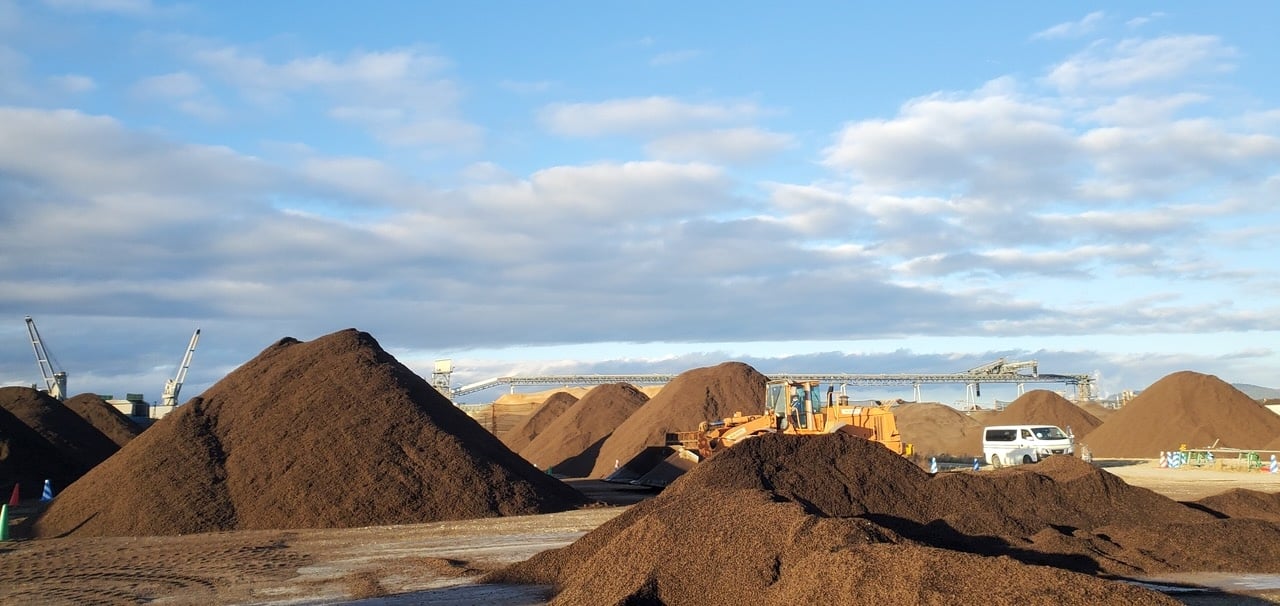Articles Menu

July 16, 2025
Yuichiro Ishizaki spends much of his working time trying to raise awareness in Japan about the razing of Indonesia’s rainforests and their replacement with palm oil plantations.
I met him two years ago at a small restaurant in Tokyo, where I had been invited by a number of non-governmental organizations to speak about the rapid increase in wood pellet shipments from British Columbia to Japan, where millions of tonnes of pellets are burned each year to make electricity.
During the meal Ishizaki showed me a short video, one of many he’d captured during field trips to Borneo, the world’s third-largest island.
The clip showed a barren clearcut hillside. Moving through that desiccated landscape was a mother orangutan pushing toward the crest of the hill in the hope of finding a forested refuge on the other side.
Clutching her neck and swaying back and forth on her broad back was her infant daughter. Every so often the infant lost her grip and slid to the ground, forcing her mother to stop and scoop her back up in her powerful arm for another short-lived piggyback ride.
Kolbert’s report begins in the Japanese city of Fukushima, where on March 11, 2011, a 9.1 magnitude earthquake struck, causing a tsunami and killing an estimated 1,800 people in that city and 18,000 people in the country overall.
Standing on the shoreline that fateful day was the Fukushima nuclear plant. The tsunami disabled the plant’s power supply, causing the meltdown of three of four of the plant’s reactor cores. Over the course of the ensuing weeks, workers toiled ceaselessly to prevent a potential catastrophe that one Japanese official called the devil’s scenario: a radioactive cloud over Tokyo’s 14 million residents.
In Fukushima’s aftermath, Japan, Germany, Switzerland and Belgium quickly rejected in whole or in part nuclear power, decisions that some of those same countries would later regret. Kolbert’s article explores the resurgence in support for nuclear power among a new generation of nuclear evangelists. The evangelists make the case that all energy sources — nuclear, coal, natural gas, oil, hydroelectricity, solar, wind — come with costs and that to single out nuclear on those grounds is wrong-headed given the compelling need to ratchet down our use of fossil fuels, which is leading to ecological and climate disasters the world over.
Kolbert, author of Fieldnotes from a Catastrophe and The Sixth Extinction, both about ecological and climate disaster, retains a healthy skepticism.
The premise of another of Kolbert’s books, Under a White Sky, is that as we set out to solve ecological problems, we invariably create new ones.
What I saw in Sendai, a coastal city near Fukushima, certainly seemed to fit that bill. In the port city and elsewhere, Japan was racing to make up the power supply lost or damaged during the earthquake and tsunami by building a dizzying new array of other power plants.
But the build-out came at unforeseen costs, an impression that only deepened upon my return to British Columbia, a province with numerous equivalents to Borneo’s clearcuts and its imperilled orangutans, including woodland caribou, fishers and northern goshawks.
The post-disaster biofuel boom
In the aftermath of the earthquake and tsunami, Japan shut down not just Fukushima but all of its nuclear plants, a move that resulted in the loss of a third of its electrical power. The government eventually switched course and reopened some of those plants. But in the interim, Japan faced a daunting energy crisis that it addressed by rapidly building big solar power installations and new thermal electricity plants, some fired with conventional fuels such as natural gas and others fired with “bioproducts” including mountains of palm kernel shells, the waste left over after palm oil production in Borneo, and wood pellets derived from the logging of B.C.’s Interior forests.


On a bright and unseasonably warm November afternoon during my travels to Japan, I stood on Sendai’s waterfront and watched as truckload after truckload of palm kernel shells were offloaded from the cavernous hold of an ocean freighter. Nearby stood tall, gleaming, silver silos where tons of wood pellets from B.C. were to be stored.
Last year, according to export data maintained by Statistics Canada, roughly two million tonnes of those pellets arrived in Sendai and other Japanese ports from B.C., linked to a dozen mills in the province that make wood pellets derived from trees logged in the province’s rapidly dwindling primary forests — natural forests never previously subject to industrial logging.
Governments touting bioenergy, including Japan and B.C., claim that energy derived from wood is more desirable than energy derived from coal, natural gas or oil because while greenhouse gases are emitted burning wood — more emissions, in fact, than burning the equivalent volume of coal — those emissions effectively don’t count because they are wiped away, over time, by new trees that replace the ones that were logged. As those new trees grow, the argument goes, the trees absorb and sequester carbon dioxide, eventually offsetting what was emitted.
The residuals ruse
Government bioenergy proponents and companies running wood-burning thermal electricity plants also claim that for the most part the wood used to make wood pellets does not come from whole trees logged specifically to make bioenergy products. Rather, they say, the primary feedstock for bioenergy facilities is “waste wood” or “residuals” left over when sawmills turn round logs into lumber, a process that typically generates a great deal of wood chips and sawdust.
These claims have, however, been refuted by respected news organizations, including the BBC in the United Kingdom and CBC in Canada, in television documentaries chronicling large numbers of logs being turned directly into wood pellets at pellet mills throughout B.C.’s Interior.
Which means that in the name of creating allegedly clean energy, forests are being razed just to burn the wood — a move that scientists warn is stoking the planetary climate chaos.
One 2018 study led by John Sterman, a professor at the MIT Institute for Data, Systems and Society, concluded that the “payback time” for planted trees to sequester the CO2 released during wood burning is somewhere between 44 and 104 years after logging.
The authors warned that the accelerated demand for bioenergy products is rapidly outstripping the ability of newly planted trees to absorb the carbon emissions associated with burning more wood.
“Assuming biofuels are carbon neutral may worsen irreversible consequences of climate change before benefits accrue,” the report warned.
Sustainable... jet fuel?
Along with the already formidable production of wood pellets in B.C. and the strain that is placing on the province’s stressed forests, increased demand for wood fibre is coming from other bioenergy producers, including those who want to use wood to make jet fuel.
In a thermomechanical process called hydrothermal liquefaction, wood is heated in a pressurized water environment that breaks down the wood to liquid components that can then be used to make fuels.
The latest company to do this in B.C., Arbios Biotech, operates on lands owned by Canfor in Prince George and is associated with the company’s local pulp mill operations.
Arbios is a joint venture between Canfor and Licella, the company that developed the plant’s hydrothermal liquefaction process. On its website, Arbios states that the plant was built “in close partnership with the Lheidli T’enneh First Nation on whose unceded territory it stands,” and that it has been named Chuntoh Ghuna, which means “the forest lives” in the Dakelh language.
The Lheidli T’enneh First Nation is actively involved in logging forests on its traditional lands. Many of the logs coming from those lands go to Canfor’s pulp mills in Prince George, and from there to the Chuntoh Ghuna facility.
Arbios’s initial goal is to produce 50,000 barrels of “bio oil” annually, with the prospect of doubling that production. The oil can then be refined into “sustainable fuels for hard-to-abate sectors like aviation and transportation,” the company’s website explains.
Not mentioned anywhere on Arbios’s website is just how much wood will be required each year to support the plant — or what proportion will be in the form of true residuals and what proportion will come from trees logged directly to make the biofuels.
Both Arbios and the Lheidli T’enneh First Nation declined to respond to the questions I submitted about the fledging project.
Walls of logs about to be burned
In February, I travelled north to Prince George to do fieldwork. During the trip, I spent part of one very still and cold afternoon walking between towering walls of logs at a Canfor log storage yard. It took five minutes — about the time it takes to walk the three city blocks from Granville to Burrard on Robson Street in downtown Vancouver — to walk down just one row.
The logs were destined to be delivered to a massive wood-chipping facility and turned into feedstock for the city’s two Canfor pulp mills. Some of the logs in the yard came from trees that were hundreds of years old and originated in some of the region’s most biologically rich, rare and increasingly fragmented primary forests, where local trappers and scientists report plummeting populations of fur-bearing species such as marten, fisher and lynx.
This is not the way things used to be. Pulp mills used to get most of the wood they needed from the wood chips, sawdust and shavings produced at sawmills. But as sawmill after sawmill in B.C. has closed as primary forests dwindle, pulp mills have been forced to rely more and more on whole logs to keep going, an eventuality that Rob Schuetz, a leading forest industry analyst in Prince George, foresaw.
Now more trees will be cut down to make wood pellets and biofuels, an ominous development, says Mike Morris, who until the most recent provincial election was MLA for Prince George-Mackenzie and who has warned for years that B.C.’s forests have been drastically overcut.
Gaslighted
“The public are victims of gaslighting by industry and politicians and have been led to believe this is a sustainable use of our forests,” Morris says. “The harvesting of whole trees for this [bioenergy] produces more GHGs while degrading the hydrological integrity of our watersheds and further loss of wildlife and biodiversity.”
The biofuel industry needs to be “restricted to residuals only, and only if it’s ‘the highest value and best use’” of that wood, he adds.
Using woody biomass as an energy source has been billed by its proponents as preferable to using allegedly dirtier energy sources. But the proposed fix has instead deepened “the grand mess” — Kolbert’s words — that we find ourselves in as the joined-at-the-hip climate and extinction crises continue to worsen.
At the end of the day, as Kolbert told an audience last year at the Linda Hall Library in Kansas City, Missouri, the big challenge facing the world is accelerating material consumption and energy use, a problem most pronounced in developed countries that are the worst offenders.
“We are probably living at a moment of maximum consumption and we need to bring that down,” Kolbert said.
Fuel switching is not the answer. Less fuel use, less of everything, is.
[Top photo: A memorial to schoolchildren killed in the Great East Japan Earthquake of 2011 stands next to silos used to store wood pellets at a new thermal electricity plant in Sendai. Photo submitted.]